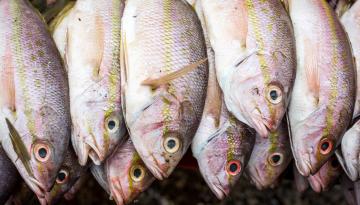
The fishing industry is in the firing line over its failure to keep its promise to protect dwindling stocks of tarakihi.
The popular fish were now down to 15 percent of their original levels, with Forest and Bird calling for more than just voluntary measures if the government is serious about protecting them.
A species is considered overfished if it falls below 40 percent.
In 2019, then fisheries minister Stuart Nash knew action was needed to prevent tarakihi declining any further.
However, he pulled back on more substantial cuts to the catch, opting instead for a more modest 10 percent reduction.
The trade-off was an industry promise of a suite of voluntary measures, including moving on when too many undersized tarakihi were caught, and completely avoiding areas juvenile tarakihi were known to inhabit.
An update provided to the new fisheries minister, David Parker, in December revealed progress had so far been sub-par.
The letter from Fisheries Inshore executive chair Laws Lawson said while the move on rules were only triggered four times, on half of these occasions boats did not bring up their nets and fish somewhere else, as they were required to do.
"We are committed to ensuring fishers are aware of how the move on rules work so they can apply them appropriately," he said.
The letter also admitted to boats straying inside four areas known to be home to high numbers of juvenile fish, that had been closed to build up stocks.
"Communication will continue to ensure the importance of avoiding these areas is understood by all relevant parties. This includes phone calls to operators to let them know when they have breached a voluntary closed area as soon as it is identified," Lawson said.
He outlined some of the innovative techniques being trialled by boats, including the use of artificial intelligence to look through video footage taken of a fisher's catch and detect fish size.
There was also a new type of net that better selected good size tarakihi, while leaving the smaller ones behind.
"Industry is investing in transformational innovation that will support the [tarakihi] Rebuild plan and advance our management of inshore fin-fisheries. This is being achieved through building effective partnerships with government," he said.
Forest and Bird spokesperson Geoff Keey said the admission boats had been straying in to closed areas, was disturbing.
"This is why measures like this actually need to have compliance. People only fish hard up to the edge when they know that they won't get pinged if they cross over into the area they're not supposed to fish. This needs to be backed by regulation so that if you do go into that area, you get stung for it."
He said the softly, softly approach was clearly not working.
"We shouldn't have to rely on a voluntary measure like this when we have a fishery in such a dire state. There really needs to be a cut in the quota. This is a fishery in a terrible state and it needs a quota cut to get it back on track."
He said it was impossible to judge the success of the voluntary measures, because the rebuild plan was stretched over 20 years.
"By the time we know whether or not they've worked, that might be too late. The decision the minister made last time means that there's a 50 percent chance of delivering the recovery that's wanted and in 20 years. So that's a 50 percent chance that it won't happen as well. And that's not good enough."
The outcome of a judicial review sought by Forest and Bird, that challenged the rationale for the 2019 decision not to cut the tarakihi catch further, is due to be released in the next few weeks.
Commenting yesterday, Lawson said fishers had strayed in to closed areas 40 times over a 12-month period, representing 1.1 percent of trawl activity over that time.
He said the two trawlers that had failed to move on had in fact moved, just not as far as they were supposed to.
He noted fishers had met all but two of the six key performance indicators set for them.
RNZ


